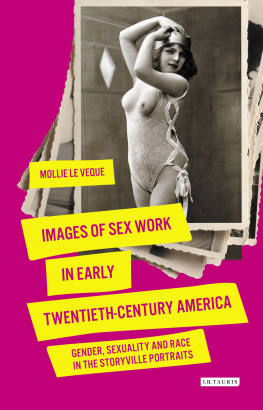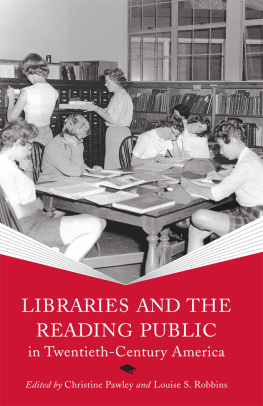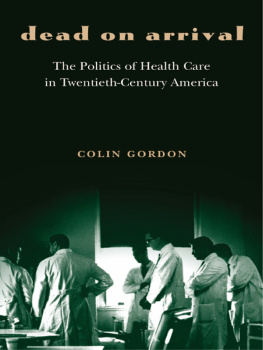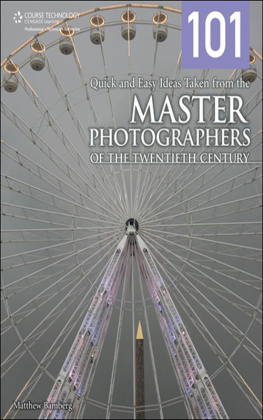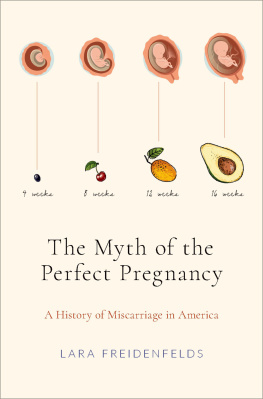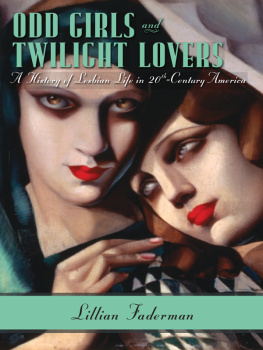LeVeque - Images of Sex Work in Early Twentieth-Century America
Here you can read online LeVeque - Images of Sex Work in Early Twentieth-Century America full text of the book (entire story) in english for free. Download pdf and epub, get meaning, cover and reviews about this ebook. publisher: Bloomsbury USA, genre: Religion. Description of the work, (preface) as well as reviews are available. Best literature library LitArk.com created for fans of good reading and offers a wide selection of genres:
Romance novel
Science fiction
Adventure
Detective
Science
History
Home and family
Prose
Art
Politics
Computer
Non-fiction
Religion
Business
Children
Humor
Choose a favorite category and find really read worthwhile books. Enjoy immersion in the world of imagination, feel the emotions of the characters or learn something new for yourself, make an fascinating discovery.
Images of Sex Work in Early Twentieth-Century America: summary, description and annotation
We offer to read an annotation, description, summary or preface (depends on what the author of the book "Images of Sex Work in Early Twentieth-Century America" wrote himself). If you haven't found the necessary information about the book — write in the comments, we will try to find it.
LeVeque: author's other books
Who wrote Images of Sex Work in Early Twentieth-Century America? Find out the surname, the name of the author of the book and a list of all author's works by series.
Images of Sex Work in Early Twentieth-Century America — read online for free the complete book (whole text) full work
Below is the text of the book, divided by pages. System saving the place of the last page read, allows you to conveniently read the book "Images of Sex Work in Early Twentieth-Century America" online for free, without having to search again every time where you left off. Put a bookmark, and you can go to the page where you finished reading at any time.
Font size:
Interval:
Bookmark:

Mollie Le Veque received her PhD from the University of East Anglia. Currently, she is an associate tutor, consulting historian and developmental editor. Her research interests are the interplay of images, archives and texts, fandom histories, erased urban spaces and the Storyville Portraits.
Le Veque has crafted an intriguing look at an important topic.
Court Carney, Associate Professor of History, Stephen F. Austin
State University and author of Cuttin Up: How Early Jazz Got
Americas Ear
Notable for its astute analysis of Bellocqs Portraits a group of photographs that have inspired almost as much speculation as the fragments of Heraclitus.
Joseph Slade, Emeritus Professor of Media Arts and Studies and
Emeritus Director of the Central Region Humanities Center at
Ohio University
As it examines self-representation, agency and legitimacy in pornography and sex work, Le Veques magnificent work shows us what stigma and taboo do to the historical process. She compellingly charts how stories are spun around people, places and artifacts, and how impulses from morality to voyeurism shape the way those stories are subsequently repressed and retold. Fascinating reading for scholars of New Orleans, sex work and the photographic archive.
Hannah Yelin, Senior Lecturer in Media and Culture,
Oxford Brookes University
In this compellingly-written account, Le Veque presents a rich and complex history of the Storyville portraits. By attentively showing how infamy, myth and prejudice have enduring effects on the way that images of female sex workers have been (mis)understood, Le Veques intelligent and nuanced reading of this enigmatic and striking collection of portrait photographs gives back agency to their historic subjects. This is an important contribution to the historical study of sex work in America, and to photographic portraiture more broadly.
Sarah Moulden, Curator, 19th and 20th-Century Collections
National Portrait Gallery, London
Mollie Le Veque has written a detailed, subtle, study of a centrally important subject. Anyone writing on visual documents in this period will need to take her work into account.
David Peters Corbett, Professor of American Art, Director,
Centre for American Art, The Courtauld Institute of Art

I.B.TAURIS
Bloomsbury Publishing Plc
50 Bedford Square, London, WC1B 3DP, UK
1385 Broadway, New York, NY 10018, USA
BLOOMSBURY, I.B.TAURIS and the I.B.Tauris logo are trademarks of Bloomsbury Publishing Plc
First published in Great Britain 2019
Copyright Mollie Le Veque, 2019
Mollie Le Veque has asserted her right under the Copyright, Designs and Patents Act, 1988, to be identified as Author of this work.
Cover design: Liron Gilenberg Cover images: Jean Aglou, Untitled, c.1910
All rights reserved. No part of this publication may be reproduced or transmitted in any form or by any means, electronic or mechanical, including photocopying, recording, or any information storage or retrieval system, without prior permission in writing from the publishers.
Bloomsbury Publishing Plc does not have any control over, or responsibility for, any third-party websites referred to or in this book. All internet addresses given in this book were correct at the time of going to press. The author and publisher regret any inconvenience caused if addresses have changed or sites have ceased to exist, but can accept no responsibility for any such changes.
A catalogue record for this book is available from the British Library.
A catalogue record for this book is available from the Library of Congress
ISBN: HB: 978f-1-8488-5894-7
ePDF: 978-1-7867-3482-2
eBook: 978-1-7867-2482-3
Series: International Library of Modern and Contemporary Art
To find out more about our authors and books visit www.bloomsbury.com and sign up for our newsletters.
To my Memaw and Bull, and in remembrance of Ed Beardsley,
who kindly loaned me his old copy of Storyville Portraits
and helped me begin this research in earnest.
Contents
Acknowledgments
As might be expected for a book this interdisciplinary, there are many people whose diverse contributions I want to acknowledge. Importantly, I need to thank the women who were in contact on the condition of their anonymity, as well as those whose talks I attended.
My doctoral supervisors at the University of East Anglia, David Peters Corbett and Thomas Ruys Smith, deserve earnest thanks. They were rigorous, kind, and encouraging; I valued their insights.
I extend sincere appreciation to Pamela Arceneaux and the staff at the Williams Research Center (especially Heather Green, who handled most of my requests and emails); our conversations while I sifted through Blue Books and newspaper articles were invaluable. In a similar vein, Louise Coleman was incredibly helpful. Without her I would not have been able to see quite so much of the New Orleans I needed to, and she was thoughtful enough to share her own research and perspective as a local.
My viva examiners, Sarah Garland and John Fagg, provided vital contributions to the thesis that became this book although corrections set after the viva are sometimes seen as a nuisance, mine only strengthened my direction and focus.
There were also the sharp, caring colleagues and peers whose support helped immensely. Merlin Seller, Joanne Mildenhall, Hilary Emmett, Westley Barnes, Gareth Lloyd, Braden Graeber, Katie Gomez, and Claire Agincourt always bolstered my spirits and faith. They spoke up with criticisms when necessary too, which was equally valuable.
My editor, Lisa Goodrum, was a constant source of reassurance and guidance. I was lucky to work with her, and I am deeply thankful for her commitment to this project.
Foreword
Two issues have strongly influenced Images of Sex Work in Early Twentieth-Century America. One concerns the Storyville Portraits copyright status, as well as general image rights matters; the other has to do with the interplays of language, semantics, and stigma. First, in respect of Lee Friedlanders express wishes, none of E.J. Bellocqs Storyville Portraits have been reproduced here. However, they are available in Storyville Portraits: Photographs From the New Orleans Red-Light District, Circa 1912 (New York: Museum of Modern Art, 1970), or on the Museum of Modern Arts website, where, as at the time of writing, Storyville Portraits was viewable. Because of the requests (or lack of responses) of their respective copyright holders, the other images referred to in the text have not been reproduced either. In the majority of cases, these are accessible in other books and media.
I refer to individual Portraits using their plate numbers as given in Storyville Portraits. Please note, though, that some Portraits are popularly known by other titles, such as Raleigh Rye Girl or Multiple Wall. Most of the canonical Portraits have been posted online at best, with credit, and at worst, without attribution or explanation. Bellocqs work will, therefore, probably look familiar to readers, especially those who are fond of New Orleanian, film, or visual histories. His oeuvre also encompasses more images than were selected to be in Storyville Portraits. Many people assume that the Portraits are within public domain because of their age. In reality their copyright situation and provenance are both less straightforward. (Friedlander is the Portraits copyright holder and has asserted his rights over the images in
Next pageFont size:
Interval:
Bookmark:
Similar books «Images of Sex Work in Early Twentieth-Century America»
Look at similar books to Images of Sex Work in Early Twentieth-Century America. We have selected literature similar in name and meaning in the hope of providing readers with more options to find new, interesting, not yet read works.
Discussion, reviews of the book Images of Sex Work in Early Twentieth-Century America and just readers' own opinions. Leave your comments, write what you think about the work, its meaning or the main characters. Specify what exactly you liked and what you didn't like, and why you think so.

